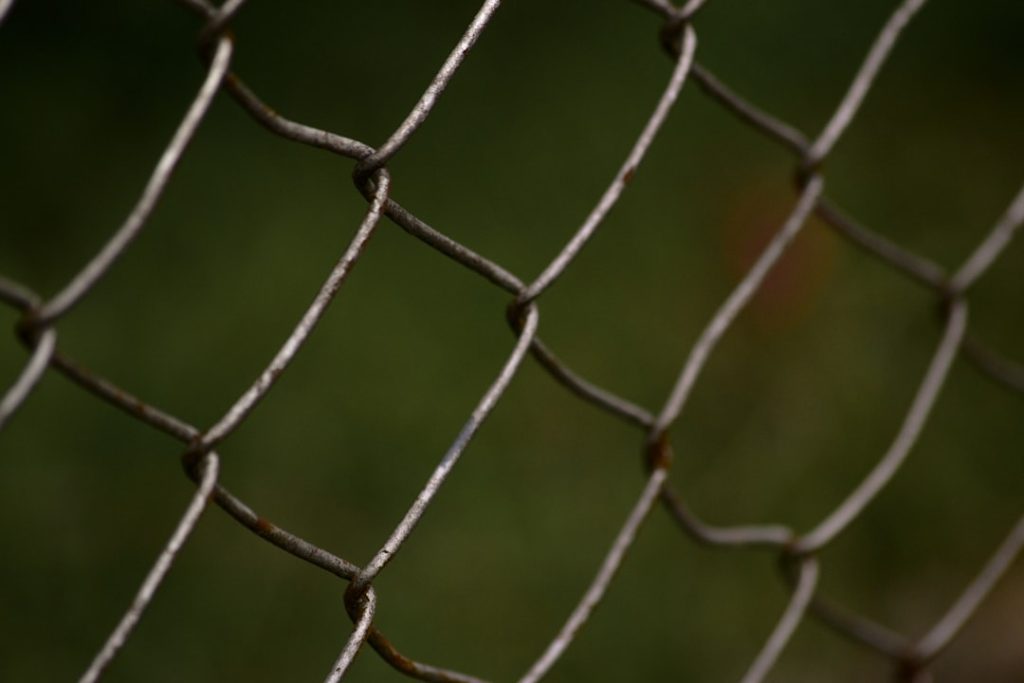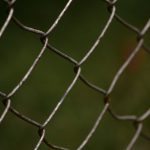Chickens and roosters exhibit inquisitive and exploratory behaviors, constantly searching for sustenance, hydration, and refuge. These birds are territorial by nature, with chickens potentially displaying aggression when threatened or defending their domain. Roosters are characterized by their distinctive crowing and may become combative during breeding periods.
Comprehending these avian behaviors is essential for developing effective strategies to exclude them from undesired locations. As social creatures, chickens and roosters typically move in groups. They are drawn to environments that offer readily available food and water sources, as well as areas providing shelter and suitable nesting sites.
By recognizing these behavioral patterns, property owners can implement preventive measures to discourage chickens and roosters from entering their premises. Such measures may include erecting physical barriers, employing natural deterrents, and, in cases of persistent issues, seeking assistance from local authorities.
Table of Contents
- 1 Creating physical barriers to keep chickens and roosters out
- 2 Using natural deterrents to discourage chickens and roosters
- 3 Implementing sound and visual deterrents to repel chickens and roosters
- 4 Properly managing food and water sources to prevent attracting chickens and roosters
- 5 Seeking assistance from local authorities or animal control if chickens and roosters become a persistent problem
- 6 Understanding the legal implications of dealing with chickens and roosters on your property
- 7 FAQs
- 7.1 What are some effective methods for keeping chickens and roosters out of my yard?
- 7.2 Are there any plants or landscaping features that can help deter chickens and roosters?
- 7.3 What should I do if I find chickens or roosters in my yard?
- 7.4 Are there any legal restrictions or regulations regarding keeping chickens and roosters in residential areas?
- 7.5 What are the potential risks or concerns associated with having chickens and roosters in my yard?
Key Takeaways
- Chickens and roosters are naturally curious and will explore their surroundings, often causing damage to gardens and property.
- Physical barriers such as fences and netting can effectively keep chickens and roosters out of specific areas.
- Natural deterrents like citrus peels, garlic, and hot pepper can be used to discourage chickens and roosters from entering certain areas.
- Sound and visual deterrents such as motion-activated sprinklers and reflective tape can be effective in repelling chickens and roosters.
- Properly managing food and water sources, such as securing trash cans and repairing leaky faucets, can help prevent attracting chickens and roosters to your property.
Creating physical barriers to keep chickens and roosters out
Physical Barriers: A Simple yet Effective Solution
One effective way to keep chickens and roosters out of unwanted areas is by creating physical barriers. This can include installing fences, netting, or other structures that prevent the birds from entering the property. Fences should be at least 6 feet high to prevent the birds from flying over them.
Netting: A Versatile and Effective Option
Netting can be used to cover areas where the birds may try to roost or nest. It is important to regularly inspect and maintain these barriers to ensure that they remain effective in keeping the birds out.
Motion-Activated Sprinkler Systems: A Humane Deterrent
Another physical barrier that can be effective in deterring chickens and roosters is the use of motion-activated sprinkler systems. These systems can be set up in areas where the birds are known to frequent and will activate when the birds come near, scaring them away with a sudden burst of water. This can be an effective and humane way to keep the birds out without causing them harm.
Using natural deterrents to discourage chickens and roosters

In addition to physical barriers, natural deterrents can also be used to discourage chickens and roosters from entering a property. One natural deterrent that is effective in keeping chickens and roosters away is the use of predator decoys. Placing decoys of natural predators such as owls, hawks, or even fake snakes in areas where the birds are known to frequent can create a sense of danger for the birds, causing them to stay away.
Another natural deterrent that can be used is the planting of certain herbs and plants that chickens and roosters find unappealing. Plants such as marigolds, mint, and lavender have strong scents that can deter the birds from entering an area. These plants can be strategically placed around the property to create a natural barrier that the birds will avoid.
Implementing sound and visual deterrents to repel chickens and roosters
Sound and visual deterrents can also be effective in repelling chickens and roosters from unwanted areas. One common sound deterrent is the use of ultrasonic devices that emit high-frequency sounds that are unpleasant for the birds. These devices can be placed in areas where the birds are known to frequent and will emit sounds that are inaudible to humans but will deter the birds from entering the area.
Visual deterrents such as reflective tape or shiny objects can also be effective in repelling chickens and roosters. These objects create a sense of movement and danger for the birds, causing them to stay away. Reflective tape can be hung in areas where the birds are known to roost or nest, while shiny objects such as aluminum foil or CDs can be placed strategically around the property to create a visual barrier that the birds will avoid.
Properly managing food and water sources to prevent attracting chickens and roosters
Properly managing food and water sources is crucial in preventing chickens and roosters from being attracted to a property. This includes ensuring that all food sources are properly stored in sealed containers that are inaccessible to the birds. It is also important to clean up any spilled food or scraps that may attract the birds.
Water sources should also be managed to prevent attracting chickens and roosters. This includes fixing any leaks or drips that may create puddles of water that the birds can drink from. It is also important to regularly clean and maintain water sources to prevent them from becoming a draw for the birds.

If chickens and roosters become a persistent problem on a property, it may be necessary to seek assistance from local authorities or animal control. These agencies can provide guidance on how to effectively manage the bird population and may be able to offer solutions such as trapping and relocating the birds. It is important to note that in some areas, there may be regulations or ordinances in place regarding the management of chickens and roosters.
Property owners should familiarize themselves with these regulations and ensure that they are in compliance with any legal requirements when seeking assistance from local authorities or animal control.
Understanding the legal implications of dealing with chickens and roosters on your property
Understanding the legal implications of dealing with chickens and roosters on a property is crucial for property owners. In some areas, there may be specific regulations or ordinances in place regarding the keeping of chickens and roosters, as well as their management. Property owners should familiarize themselves with these regulations and ensure that they are in compliance with any legal requirements when implementing deterrents or seeking assistance from local authorities or animal control.
Failure to comply with these regulations could result in fines or other legal consequences. In conclusion, understanding the behavior of chickens and roosters is crucial in finding effective ways to keep them out of unwanted areas. Property owners can implement physical barriers, natural deterrents, sound and visual deterrents, properly manage food and water sources, seek assistance from local authorities or animal control if the problem becomes persistent, and ensure compliance with any legal requirements when dealing with these birds on their property.
By taking proactive measures, property owners can effectively manage the presence of chickens and roosters on their property while ensuring the well-being of both the birds and their property.
If you’re looking for ways to keep chickens and roosters out of your yard, you may also be interested in learning how to convert a shed into a chicken coop. This article provides helpful tips and ideas for repurposing an existing structure to create a safe and comfortable home for your feathered friends. Additionally, you can also explore interior design ideas for chicken coops and learn how to properly insulate them to ensure the well-being of your poultry.
FAQs
What are some effective methods for keeping chickens and roosters out of my yard?
Some effective methods for keeping chickens and roosters out of your yard include installing a fence with a secure gate, using motion-activated sprinklers, and using natural deterrents such as citrus peels or vinegar.
Are there any plants or landscaping features that can help deter chickens and roosters?
Yes, planting thorny bushes or shrubs, such as rose bushes or holly bushes, can help deter chickens and roosters from entering your yard. Additionally, creating a barrier with tall grasses or dense vegetation can make it more difficult for them to access your yard.
What should I do if I find chickens or roosters in my yard?
If you find chickens or roosters in your yard, it’s important to first identify the owner and contact them to retrieve their animals. If you are unable to locate the owner, you may need to contact local animal control or a wildlife rehabilitation center for assistance.
Are there any legal restrictions or regulations regarding keeping chickens and roosters in residential areas?
Yes, many residential areas have specific regulations and restrictions regarding the keeping of chickens and roosters. It’s important to check with your local government or homeowners’ association to ensure that you are in compliance with any applicable laws or regulations.
What are the potential risks or concerns associated with having chickens and roosters in my yard?
Some potential risks or concerns associated with having chickens and roosters in your yard include noise disturbances, potential damage to landscaping or gardens, and the spread of diseases or parasites. It’s important to consider these factors before deciding to keep chickens and roosters on your property.
Meet Walter, the feathered-friend fanatic of Florida! Nestled in the sunshine state, Walter struts through life with his feathered companions, clucking his way to happiness. With a coop that’s fancier than a five-star hotel, he’s the Don Juan of the chicken world. When he’s not teaching his hens to do the cha-cha, you’ll find him in a heated debate with his prized rooster, Sir Clucks-a-Lot. Walter’s poultry passion is no yolk; he’s the sunny-side-up guy you never knew you needed in your flock of friends!







